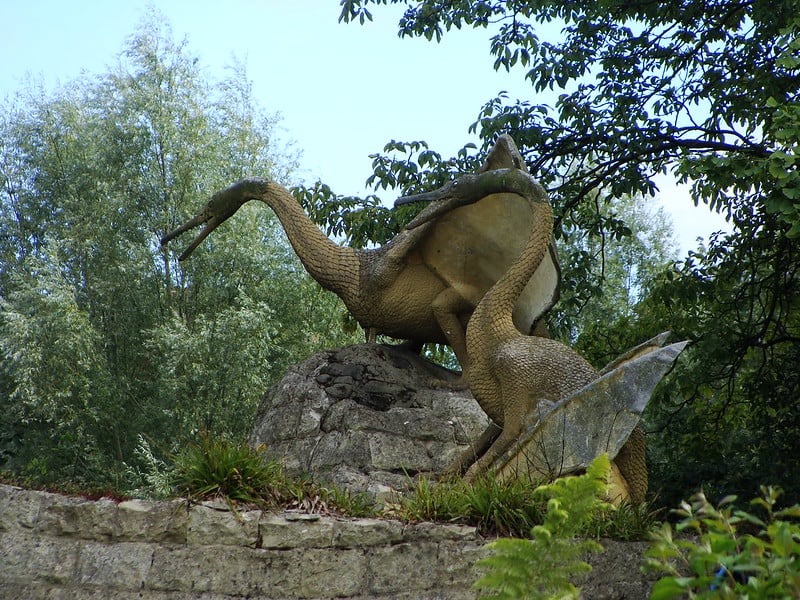
Scientists have recently made an exciting discovery in Fujian Province, China. They found the fossil of a bird-like dinosaur from the Jurassic Period, and they’ve given it a name: Fujianvenator prodigiosus.
This discovery is shedding light on an important part of how birds evolved. It’s like a puzzle piece that helps us understand how modern birds came to be.
The Fujianvenator dinosaur poses a fascinating question: Is it considered a bird? The answer depends on how we define a bird. This is what Min Wang, a leading scientist in the study and a paleontologist at the Institute of Vertebrate Paleontology and Paleoanthropology of the Chinese Academy of Sciences, tells us.
When asked to describe Fujianvenator in one word, Wang chose “bizarre.” He said, “Fujianvenator is far from similar to any modern birds.”
#Fossil of a new bird-like #dinosaur living 148-150 mln yrs ago was found in Zhenghe Fauna, SE China's Fujian, bridging a gap in the fossil record of birds' origin. Named Fujianvenator prodigiosus, the dino as tiny as a pheasant is distinct from other avialans for long lower legs pic.twitter.com/Kl2qGWucaa
— People's Daily, China (@PDChina) September 7, 2023
Evolution of dinosaurs
A significant moment in the evolution of dinosaurs occurred when small, feathered, two-legged dinosaurs, known as theropods, eventually gave rise to birds during the late Jurassic period. The oldest-known bird, called Archaeopteryx, existed around 150 million years ago in what is now Germany.
Fujianvenator belongs to a group called avialans, which includes all birds and their closest dinosaur relatives that were not yet considered birds. Interestingly, despite their humble beginnings, birds managed to survive a catastrophic asteroid strike that occurred 66 million years ago and led to the extinction of their non-avian dinosaur counterparts.
Was the Fujianvenator a runner or a flyer?
This intriguing dinosaur fossil, unearthed in October, is relatively complete, but it’s missing the skull and parts of its feet. This makes it challenging to figure out what it ate and how it lived.
One unique feature of the Fujianvenator is its lower leg bone, the tibia, which is twice as long as its thigh bone, the femur. This sets it apart from other meat-eating dinosaurs like Tyrannosaurus. Fujianvenator also sported a long, bony tail.
When it comes to its forelimbs, they resemble a bird’s wing but with three claws on the fingers, unlike modern birds. So, we can refer to it as having wings, but whether it could fly remains uncertain. Based on its skeletal features, the Fujianvenator probably wasn’t well-suited for flying.
“The fossil itself does not preserve feathers. However, its closest relatives and nearly all the known avialan theropods have feathers, and feathers are widely distributed among dinosaurs. Therefore, it would not be a surprise if Fujianvenator had feathers,” Wang said.
Possible lifestyles for the Fujianvenator dinosaurs
Based on the way its long legs are built, researchers have put forth two possible lifestyles for the Fujianvenator dinosaur: it might have been a swift runner or perhaps waded in a swampy environment, similar to how modern cranes or herons live.
When asked to choose between these options, Wang leans towards the idea that Fujianvenator was a runner.
More studies about the dinosaurs
Scientists are on a quest to gain a deeper understanding of how birds came into being, as well as non-avian dinosaurs that shared bird-like characteristics.
Palaeontologist Zhonghe Zhou, a co-author of the study published in the journal Nature, sees Fujianvenator as another intriguing piece of evidence. It highlights the fact that various bird-like dinosaurs lived around the same time and occupied similar habitats to their bird descendants.
The early history of birds remains unclear because there are very few fossils from that time. After the discovery of Archaeopteryx, which was a bird about the size of a crow that had teeth, a long bony tail, and no beak, there’s a gap of roughly 20 million years before we find the next bird fossils.
Zhou notes, “One thing is for sure. There is still a big gap between the oldest known bird and the second-oldest known birds.”
See all the latest news from Greece and the world at Greekreporter.com. Contact our newsroom to report an update or send your story, photos and videos. Follow GR on Google News and subscribe here to our daily email!



